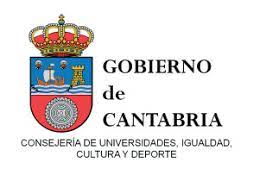The falsifications of History: Cervantes between Bragança and Sanabria
DOI:
https://doi.org/10.55422/bbmp.176Keywords:
Cervantes, Bragança, Jesuits, Cervantine biographyAbstract
At the historical city of Bragança, cross-border and strategic location of the Portuguese Royal House, it is lately affirmed that Miguel de Cervantes, probably after 1562, may have visited the city –and not only that– because it is also being said that he may have studied at the Jesuists school that at that time existed in the city. This matter, not currently verifed with documents, arises from cultural political instances that may be of interest to Sanabria –together with Zamora– and Bragança, cities linked in many aspects, being the touristic one of them. In this work I intend to compile those data from Sanabria and Bragança, about the author’s life between his birth and his youth, and also bring back the focuss on the polemic about the origin of Miguel de Cervantes Saavedra, refuting a number of statements given in the cultural environment of Bragança; clearly poorly advised, and so analyse in light of the impartial data the (un)likely documentation from Bragança on the matter.
Downloads
Publication Facts
Reviewer profiles N/A
Author statements
Indexed in
- Academic society
- Sociedad Menéndez Pelayo
- Publisher
- Sociedad Menéndez Pelayo
Global Statistics ℹ️
|
194
Views
|
145
Downloads
|
|
339
Total
|
|
References
ALVES, Francisco Manuel (ABAD DE BAÇAL). (2000) Memórias arqueológico-históricas do distrito de Bragança. Gaspar Martins Pereira (Coord.). Bragança. Câmara Municipal de Bragança/Instituto Português de Museus. 12 tomos (2ª ed.)
BARROSO DA FONTE. (2001) Dicionário dos mais ilustres Transmontanos e Alto Durienses. Guimarães. Editora Cidade Berço. Leído en http://concelhos.
dodouro.com/jornal/braganca.asp (disponible en junio de 2016).
BRANDARIZ, César. (2011) El hombre que hablaba difícil. ¿Quién era realmente Cervantes? Primer siglo y cuarto de ignorancia biográfica y tres siguientes de error histórico (1616-2010). Madrid. Ézaro.
CANAVAGGIO, Jean. (2004) «Vida y literatura: Cervantes en el Quijote». Don Quijote de la Mancha. Francisco Rico (Dir.). Barcelona. Galaxia Gutenberg/Círculo de lectores. XLV-LXXII.
CANAVAGGIO, Jean. (2007) «Los puntos controvertidos de la vida de Cervantes». Cervantes y el Quijote. Actas del coloquio internacional. Emilio Martínez Mata (Coord.). Madrid. Arcolibros. 13-30.
CANAVAGGIO, Jean. (2015) Cervantes. Madrid. Espasa-Calpe.
GÓMEZ BAUTISTA, Alberto. (2011) «Referencias a la lengua mirandesa en la literatura». Ianua. Revista Philologica Romanica. 11. 207-216.
LUCÍA MEGÍAS, José Manuel. (2016) La juventud de Cervantes. Una vida en construcción. Retazos de una vida en el Siglo de Oro. Madrid. Edaf.
MAGANTO PAVÓN, Emilio. (2014) La familia Villafranca y Miguel de Cervantes: nuevos documentos cervantinos localizados en el Archivo General de la Indias. Alcalá. Servicio de Publicaciones de la Universidad de Alcalá de Henares.
MAGANTO PAVÓN, Emilio. (2015. La partida de bautismo de Miguel de Cervantes y sus detractores. Alcalá. Servicio de Publicaciones de la Universidad de Alcalá de Henares.
OSSWALD, Cristina. (2010) «O colégio do Santo Nome de Jesus em Bragança: um quotidiano jesuíta». Via Spiritus, Revista de História da Espiritualidade e do Sentimento Religioso. CITCEM. nº 17. 261-272.
RODRÍGUEZ, Leandro. (1978) Don Miguel judío de Cervantes. Santander. Cervantina.
RODRÍGUEZ, Leandro. (1999a) Cervantes en Sanabria. Ruta de don Quijote de la Mancha. Zamora. Diputación de Zamora.
RODRÍGUEZ, Leandro. (1999b) Ruta de Don Quijote de la Mancha. Vías romanas. Camino Meridional de Santiago. Zamora. Patronato de Turismo/Diputación de Zamora.
RODRÍGUEZ, Leandro. (2003) «Miguel de Cervantes Saavedra, ¿fue también súbdito portugués?». Brigantia. XXIII. 3/4. 175-228.
RODRÍGUEZ, Leandro. (2012) Cervantes caballero por Europa. Zamora. Semuret.
SALAS MERINO, Vicente. (2014) Tenencia, señorío y condado de Lemos. Madrid. Visión Libros.
SOYER, François. (2013) A perseguição aos judeus e muçulmanos de Portugal. Lisboa. Edições 70.
Downloads
Published
How to Cite
Issue
Section
License
Copyright (c) 2022 Alexia Dotras Bravo

This work is licensed under a Creative Commons Attribution-NonCommercial 4.0 International License.







